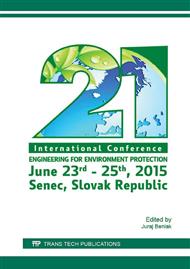p.131
p.137
p.144
p.152
p.159
p.168
p.177
p.184
p.192
Measurement Technique for the Flood Barriers Deformation Determination
Abstract:
Changes in the climate over the past decades have caused weather extremes that bring numerous unwanted phenomena. Many of these irregularities cause unusually high and low temperatures, intense droughts and devastating floods. All of the listed natural disasters caused by weather extremes affect a wide range of fields which are crucial for our everyday life and its quality. The most affected areas are health and safety, agriculture, industry, transportation. It is therefore evident that the effect of extreme weather in any form can bring not only financial loses, but also a loss of human lives. Based on these facts it is of great interest that the effects of these natural forces are minimised or totally eliminated. This paper deals with the performance of a newly designed mobile flood barrier in real simulated field test conditions. Construction of the barriers was designed solely by the Slovak University of Technology at its Faculty of Mechanical Engineering with the intention of providing effective, economic and safe flood barriers system with a short assembly time. The undertaken testing was focused on the performance of the flood barriers under static pressure by the deflection measurements. The testing consisted of the following steps: experiment design, on sight mounting and fine-tuning of the whole measuring apparatus and evaluation of the gathered data. To simulate real conditions which the barrier will experience during its use, a life size model of the flood barrier segment was constructed and tested. The measurement setup, measurement procedures, the outcomes of the deformation testing together with the resulting deflection model are presented in the following pages of this paper.
Info:
Periodical:
Pages:
159-167
Citation:
Online since:
April 2016
Keywords:
Price:
Сopyright:
© 2016 Trans Tech Publications Ltd. All Rights Reserved
Share:
Citation:


